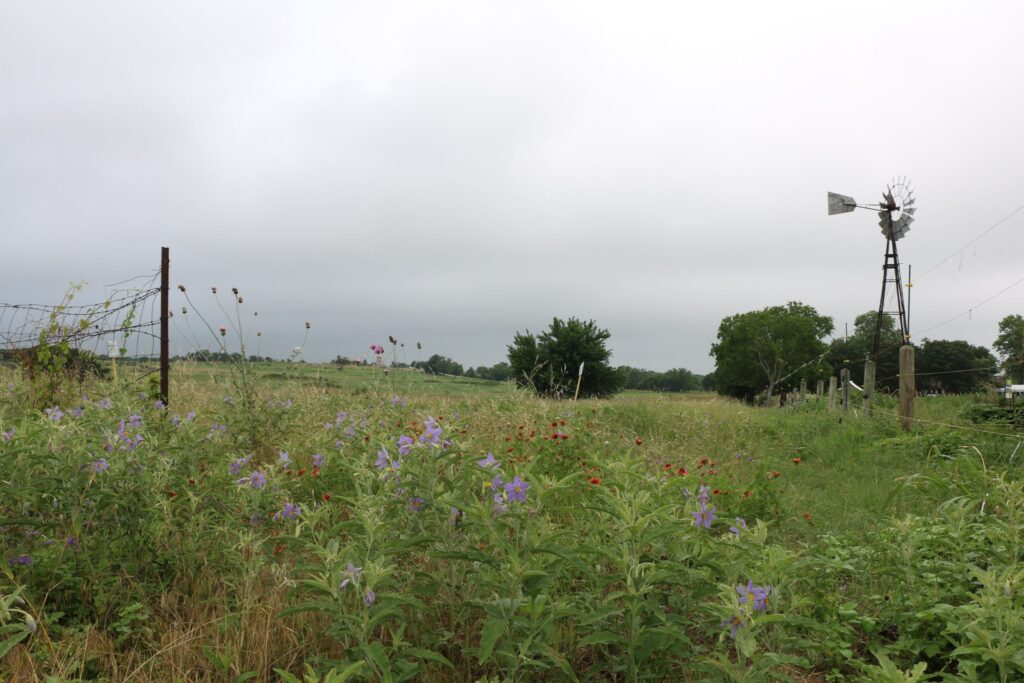This time of year, a wide variety of plants and flowers blossom across the Cross Timbers Region, encompassing North Texas.
The Fort Worth Prairie Park makes up about 3,000 acres of that ecological region.
In some areas of the prairie, North Texans can find an array of wildflowers in full bloom starting in the spring, carpeting the land with a mix of Indian blanket, American basketflower and Texas vervain.
Transitioning from the spring, North Texans can discover bluestem grasses, milkweed and cornflower inundating the land during this time of year and leading into the summer.
This same region is home to an array of wildlife such as grassland and migratory birds, bobcats and deer but also endangered or threatened species.
These are just a few of the many plant and wildlife species that make up the vast biodiversity of the Fort Worth Prairie Park, said Jarid Manos, CEO and founder of the Great Plains Restoration Council.

“You never know what you’re going to see,” said Manos.
Considering the wide array of species that call the prairie home and its biodiversity, conserving this natural area is critical and should be an effort shared by both Fort Worth residents and leaders, said Manos.
He and the team at the Great Plains Restoration Council are focused on working with the community to ensure that Tarrant County and Fort Worth’s prairies remain untouched. The group has set a goal of adding 1,000 acres to the current 3,000 acres at Fort Worth Prairie Park.
“People think it’s just a field or something. But we’re out there every day … the amount of life you can see, there’s life in every square meter, yeah,” said Manos. “We have become so disassociated from the natural world that we just think it’s land.”
The conservation nonprofit was founded in late 1999 with the mission of protecting the natural areas of Colorado, Kansas and Texas. Since then, the group has grown to launch conservation initiatives in other parts of the country, such as Florida, Georgia and California. By 2006, a public-private initiative on protecting Fort Worth’s prairie kicked off.
Fort Worth was once home to millions of acres in prairie land but the majority of it has been lost to development and other uses, according to Manos. Some of that development includes 2,000 acres of prairie land where Fort Worth’s Tarleton State University campus now sits.

“It was the most pristine version of native prairie that I had ever seen,” said Manos of that land.
For about eight years, the conservation group fought to protect those 2,000 acres. With the majority of the land being bought by a developer, the group was able to keep 250 acres, which is now contributing to one of the city’s largest recent land acquisitions, Rock Creek Ranch Park, according to Manos.
Describing the initiative as the “last stronghold,” Manos and members of the nonprofit want to conserve what remains of the prairie to maintain its biodiversity and keep wildlife alive.
The initiative involves working with the entities who each own parcels of the prairie land, including the city of Fort Worth, the U.S. Army Corp of Engineers, the Sid W. Richardson Foundation and private land owned by the Saint Francis Village retirement community.

Fort Worth leaders and federal officials have come a long way in prioritizing the city’s natural areas and open spaces, Manos said.
In 2019, the Corp of Engineers classified the land surrounding Benbrook Lake as environmentally sensitive areas. This designation defines protected areas where scientific, ecological, cultural or aesthetic features have been identified and are prohibited from being adversely impacted.
The nonprofit formed an agreement with the Corp of Engineers to rewrite its Benbrook Lake management plan to add stricter designations and more protection for the land. Additionally, the group is working with Saint Francis Village to clear the land, including privately owned areas, of invasive species through prescribed burns.
Manos also applauds the green space initiative Good Natured, launched under Mayor Mattie Parker’s leadership in 2023, and credits the program with supporting land conservation efforts such as the work going into the Fort Worth Prairie Park.

Through Good Natured, Parker aims to save 10,000 acres of open and green space from development by 2028. As of this year, the program has acquired and saved 1,000 acres of land.
“I feel like there is an interesting pride in Fort Worth in our unique and irreplaceable native ecosystem, and what it means as a healthy and strong and diverse city to protect it,” said Manos. “There has been systemic change since (the Great Plains Restoration Council) first started. … We had to create a new culture of caring. And Fort Worth has really stepped up.”
Now, one of the group’s main priorities is conserving the prairie land west of the Chisholm Trail Parkway toll road, which is experiencing rapid growth, particularly within the Walsh Ranch and Veale Ranch development sites.
While the group has gained support from local environmental advocacy groups, such as the Friends of Tandy Hills, saving prairie land will require continued help and work from residents and Fort Worth leaders.
Conserving the land would not only protect vegetation and wildlife but benefit residents, in turn, said Manos.
“When you’re at (the Fort Worth Prairie Park), you get to see and experience what it’s like to walk in wild prairie. So you’re being part of an ecosystem in recovery.”
Nicole Lopez is the environment reporter for the Fort Worth Report. Contact her at [email protected].
At the Fort Worth Report, news decisions are made independently of our board members and financial supporters. Read more about our editorial independence policy here.
Related
Fort Worth Report is certified by the Journalism Trust Initiative for adhering to standards for ethical journalism.
Republish This Story
![]()


